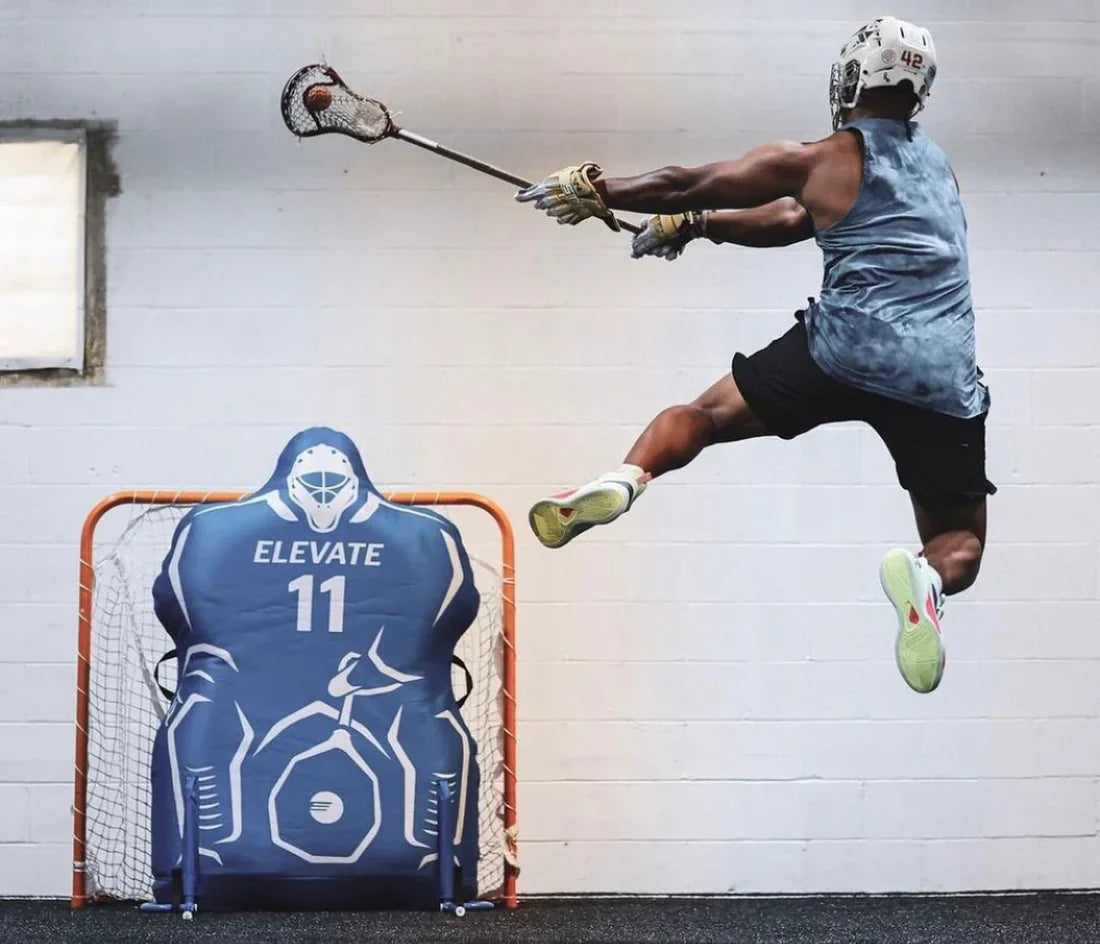

How to Increase Your Lacrosse Shot Speed: Tips from the Pros
Every lacrosse player dreams of ripping blistering shots past the goalie. Speed isn’t just a flashy stat — it’s often the difference between a goal and a save. Research from US Lacrosse shows that elite shooters consistently break the 90 mph mark, leaving goalies little time to react.
Boosting shot speed can transform a player’s entire game. It opens up more scoring chances, creates space on the field, and forces defenders to second-guess every move. This article dives into expert-backed techniques and training strategies used by the pros, giving you practical ways to fire harder and faster without sacrificing accuracy.
Why Does Shot Speed Matter in Lacrosse?
Impact on Game Performance
Faster shots dramatically improve scoring odds. When the ball rockets toward the lacrosse cage, goalies have milliseconds to react, and that slim window often leads to goals. Teams with multiple fast shooters stretch defenses thin, opening up opportunities across the offensive zone.
A hard, accurate shot keeps opponents scrambling. Whether on a power play or a fast break, shooters with high velocity become game changers.
Psychological Advantage
Speed doesn’t just affect the scoreboard — it messes with defenders’ heads. When attackers consistently rip high-speed shots, defenders hesitate, worried about getting burned or screened. Goalies feel the pressure too, often sagging deeper into the crease or second-guessing their positioning.
That mental edge can tilt an entire game, shifting momentum and confidence to the offensive side.
Professional Insight
Ask any pro, and they’ll tell you: shot speed is non-negotiable. Paul Rabil, one of the hardest shooters in lacrosse history, regularly emphasizes that velocity is central to an elite offensive game. It’s not about brute force, though — it’s about combining strength, precision, and mechanics into one fluid motion.
Top players work tirelessly to refine their speed because they know it separates good from great on the field.
Key Factors Affecting Shot Speed
Shot speed starts with the body. A powerful shot doesn’t come from the arms alone — it relies heavily on the core, shoulders, and wrists working together. Core strength stabilizes the body and transfers energy through the shot. Without it, even the strongest arms can’t deliver maximum power. Arm power provides the driving force behind the motion, while wrist flexibility adds the final snap that accelerates the ball. Players who train all three areas consistently notice faster, more controlled shots.
Proper Shooting Technique
Strength means little without proper form. Mechanics shape how effectively power moves from the body into the stick and, ultimately, the ball. Key elements include foot positioning, body rotation, and follow-through. A smooth, full motion generates more speed than brute force alone. Cutting the motion short robs the shot of power and often leads to poor accuracy. Players who master the mechanics consistently outperform those who rely only on strength.
Stick and Equipment Choice
Equipment matters more than most players realize. The right shaft and head combination can make a meaningful difference. Lightweight shafts allow faster movement, while stiff heads improve energy transfer. Stringing also plays a role — pocket depth and tension affect ball release. Players aiming to increase shot speed should work with coaches or equipment experts to dial in the right setup for their style.
Shooting Angle and Stance
Body positioning is often overlooked but critical. A balanced, low stance gives players stability to drive through the shot. Hip rotation generates torque, turning lower-body power into upper-body force. Poor foot placement or locked hips cut speed dramatically. Top shooters constantly fine-tune their stance, adjusting to different shot angles without sacrificing power.
Proven Training Techniques to Increase Lacrosse Shot Speed
Strength Training Exercises
Rotational Medicine Ball Throws
Medicine ball throws build rotational strength in the core — the same twisting motion used when shooting. Players can train both sides of the body to improve balance and prevent overuse injuries.
Wrist Curls and Forearm Workouts
Strong forearms help control the stick and add snap to the release. Wrist curls, reverse curls, and grip squeezes improve endurance and control, especially during long games.
Overhead Dumbbell Presses
Pressing movements strengthen shoulders and upper back, supporting a more powerful shot. Overhead presses also improve posture, which helps keep form tight and consistent.
Plyometric Drills
Jump Squats and Lateral Hops
Plyometric work develops explosiveness — the ability to generate force quickly. Jump squats strengthen legs, while lateral hops improve balance and control, especially during dynamic movement on the field.
Resistance Band Training
Shot Simulation with Resistance
Resistance bands mimic the shooting motion under tension, improving short-burst endurance and power. Players can attach bands to a fence or goalpost and practice shooting form, developing speed without needing a ball or net.
Mastering the Technique: Pro Tips for Shooting Faster
Every fast shot starts from the ground up. A low, wide stance gives players the balance they need to drive power through the ball. The knees stay slightly bent, the feet shoulder-width apart, and the weight centered. That stable base allows players to explode into the shot without losing control or balance.
Follow Through Like a Pro
Cutting the motion short kills both speed and accuracy. A full follow-through ensures the energy built in the body transfers completely to the ball. The stick should finish high, with the shoulders rotating through the shot. Pro players never stop the motion midway — they finish strong every time.
Snap Your Wrists for Extra Speed
The wrist snap adds the final burst of speed right before release. Strong, flexible wrists let players whip the ball without needing extra force from the arms. Many pros credit wrist work as a game-changing factor in their shot speed. Without it, even a perfect stance and follow-through won’t deliver maximum velocity.
Increase Torque with Hip Rotation
The hips hold enormous untapped power. Rotating the hips through the shot creates torque, multiplying the force from the legs and core. Instead of relying on the arms, players who engage their hips generate shots that explode off the stick. It’s the same principle seen in sports like baseball and hockey — the lower body drives the upper body.
Pro Insight
Paul Rabil, one of lacrosse’s most feared shooters, often tells younger players: “Focus on fluid movement rather than brute force.” His point? A smooth, connected motion will always beat raw strength. Top shooters prioritize mechanics and flow, not just muscle.
Drills to Increase Your Lacrosse Shot Speed
Wall ball isn’t just about repetition — it’s about building muscle memory. Practicing quick, sharp releases against a wall teaches players to shoot faster under pressure. Focus on maintaining form with every rep, not just mindlessly firing the ball.
Target Practice with Speed Tracking
Adding a radar gun to practice changes the game. Tracking speed keeps players accountable and provides clear benchmarks for improvement. Pick a target in the net, fire repeatedly, and measure the results. Watching progress in real time keeps motivation high.
Off-Balance Shooting
Games are messy, and clean setups aren’t guaranteed. Practicing off-balance shots trains the body to generate power even in awkward positions. Leaning, twisting, or shooting on the run helps players stay dangerous no matter where they are on the field.
Speed and Accuracy Drills
A hard shot means nothing if it misses the goal. Combining speed work with accuracy drills sharpens both. Set up small targets in the corners of the net and aim for them while pushing shot speed. The goal is simple: shoot fast, but never wild.
Common Mistakes to Avoid
1. Focusing Only on Arm Strength
Many players make the mistake of thinking shot power comes only from the arms. Ignoring the core and legs limits the ability to generate real force. The lower body drives the motion, and the core connects that energy to the stick. Players who skip leg and core work often find their shots lack speed and consistency.
2. Incorrect Grip or Hand Placement
A sloppy grip or poor hand placement weakens both power and accuracy. Hands placed too close together reduce leverage, while an uneven grip disrupts control. Keeping the top hand loose and the bottom hand firm gives the right balance of control and whip. Players should routinely check grip placement during practice.
3. Failing to Follow Through
Cutting the motion short drains power from the shot. The follow-through completes the transfer of energy from the body to the ball. Without it, shots die halfway, falling short of the mark. Pro shooters always finish their motion, ensuring maximum velocity and a clean release.
4. Poor Foot Positioning
Feet set the foundation for the entire shot. Poor positioning leads to loss of balance, wasted energy, and reduced speed. Weight should stay on the balls of the feet, with the lead foot pointed toward the target. Proper footwork ensures players can generate force and stay stable even when moving at full speed.
Real-World Examples: Fastest Shots in Pro Lacrosse
Here is the article about fastest shots in lacrosse game ever recorded.
-
Zack Dorn (116 mph) — Dorn set the MLL All-Star Game record with a jaw-dropping 116 mph shot. His technique and timing showed the value of blending mechanics with strength.
-
Paul Rabil (111 mph) — Known for pairing speed with deadly accuracy, Rabil remains one of the sport’s most respected shooters. His focus on fluid motion over brute force set a new standard for midfielders.
-
Mike Sawyer (114 mph) — Sawyer made his mark in collegiate lacrosse as one of the hardest shooters, using exceptional lower-body power to drive velocity. His off-ball movement and shot preparation made him a standout.
Takeaway
Pro players understand that a fast shot isn’t about raw muscle — it’s about combining balanced technique, total-body strength, and relentless practice. Whether you’re an attacker or midfielder, mastering these elements can elevate your game and make every shot count.
